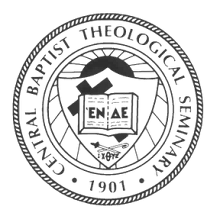Religious pluralism is the reality of our time;
indeed, the world has always contained persons of widely varied religious
experience. Because of differing
historical and geographical circumstances, people have found different pathways
to express their deepest longings to worship.
While Christians
have taken seriously the great commandment to preach to all the nations, they
have also learned the challenge of encountering the lived religion of
others. Heroic attempts to spread the
Gospel in the 19th and 20th centuries on the part of
American missionaries have resulted in only a fraction of converts in lands
where Buddhism, Islam, and Hinduism, to name some of the major world’s
religions, are imbedded.
Consequently, many
Christians have recast the nature of mission from conversion to shared
humanitarian projects. Conversions still
occur, but they are in the context of a larger vision of human flourishing than
a narrow version of what constitutes salvation.
Missionaries are learning that as they join the life of the people they
serve, their Gospel witness is offered more humbly—and more effectively.
One no longer has
to journey to the “uttermost parts” to encounter different religious
commitments and practice. As the
demographers tell us, the United States is home to many traditions as migration
of the world’s peoples rapidly accelerates.
Yesterday afternoon
I was a part of a significant interfaith conference at the Islamic Center in
Murfreesboro, TN. The presence of this
center in Middle Tennessee was hotly contested, yet it has been open for two
years, providing worship for Muslim families and educational opportunities for
the larger community. The imam is deeply
committed to fostering conversations that can be transformative for shared
understanding.
I joined a renowned
Jewish scholar, Amy-Jill Levine, and a gifted Islamic scholar Zainab Alwani, to
offer lectures on our respective understanding of our tradition’s understanding
of Scripture and Sexuality. It was a
daunting assignment, and we each mined our sacred texts—Tanakh and Talmud,
Christian Scripture, and the Koran—for guidance. Each woman sought to illumine the “thou
shalt,” “thou shalt not,” and “thou might want to” texts.
I chose to
delineate the spectrum of Christian responses to human sexuality: prohibitive,
procreative, communicative, celebrative, and unitive. I suggested, following David Jensen’s
insight, that the whole of Scripture is a narrative of desire. I believe that desire for God and for one
another is of the same longing, and they do not have to be competitive. Constructing a thoughtful theology of human
sexuality is an important and much needed pursuit.
As you might
imagine, there were significant differences among the three Abrahamic
traditions, as well as common concern for the promotion of healthy human living
in families and the larger community.
Each of us dealt with transposing ancient texts into a contemporary key,
which proves most difficult for the perceived inviolability of the Koran.
The long afternoon
was punctuated by a time of prayer for the Muslims, and many of us skipped the
refreshments in order to observe the serious devotion to regular prayer with
fellow congregants. It was a further opportunity
to grow in respect for the lived religion of this body and to acknowledge their
generous hospitality to those of us of other traditions.
Molly T. Marshall
Central prepares women and men for seeking God, shaping church, and
serving humanity.









No comments:
Post a Comment